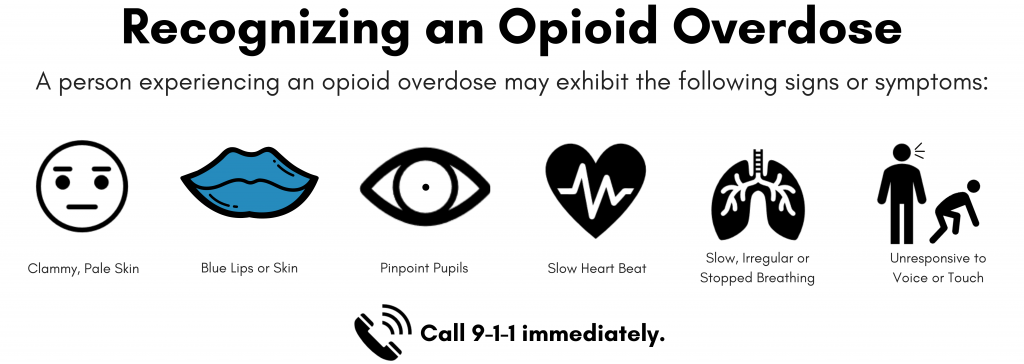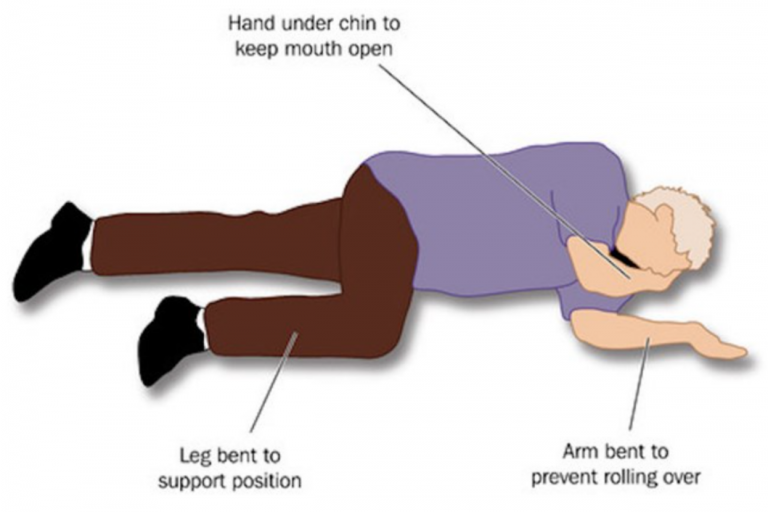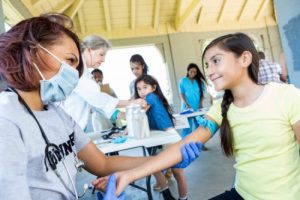Step 1: Assess if an Overdose
Check for a response and for signs of an opioid overdose including the below symptoms:

Step 2: Activate EMS
Call for emergency medical services immediately. If possible have some else call while you administer naloxone.
Step 3: Give Naloxone
Naloxone (link to naloxone page) is a medication that can temporarily reverse an opioid overdose.
Eastern Idaho Public Health offers free naloxone trainings. To schedule a training or for questions, call Mallory Johnson at (208) 533-3221.
Step 4: Rescue Breaths
After administering naloxone, ensure the person is breathing or give rescue breaths.
Step 5: Recovery Position
Once breathing resumes, turn person on their side into the recovery position.

Step 6: Stay with the Person Until EMS Arrives
If possible, stay with the person until EMS arrives.
Step 7: If Needed, Administer a Second Dose of Naloxone
Sometimes additional doses of naloxone are needed to reverse and opioid overdose. It can take up to 2 minutes for naloxone to take effect. Best practice is to administer the first dose, wait 2 minutes, if there is no response then you can administer additional doses, being sure to wait 2 minutes between each dose. You cannot hurt someone by giving them too much naloxone, but the more naloxone you administer the more severe their withdrawl symptoms will be.
Opioid Education and Naloxone Training
Eastern Idaho Public Health provides information and presentations to community members and organizations about the current state of opioid use in Idaho, safe storage and disposal of prescription opioids, illicit opioids, opioid overdose warning signs, availability of naloxone, how to administer naloxone, and Idaho’s Good Samaritan Law. Presentations include overdose recognition and demonstrations of nasal naloxone.
To schedule a training or for questions, call Mallory Johnson at (208) 533-3221.




